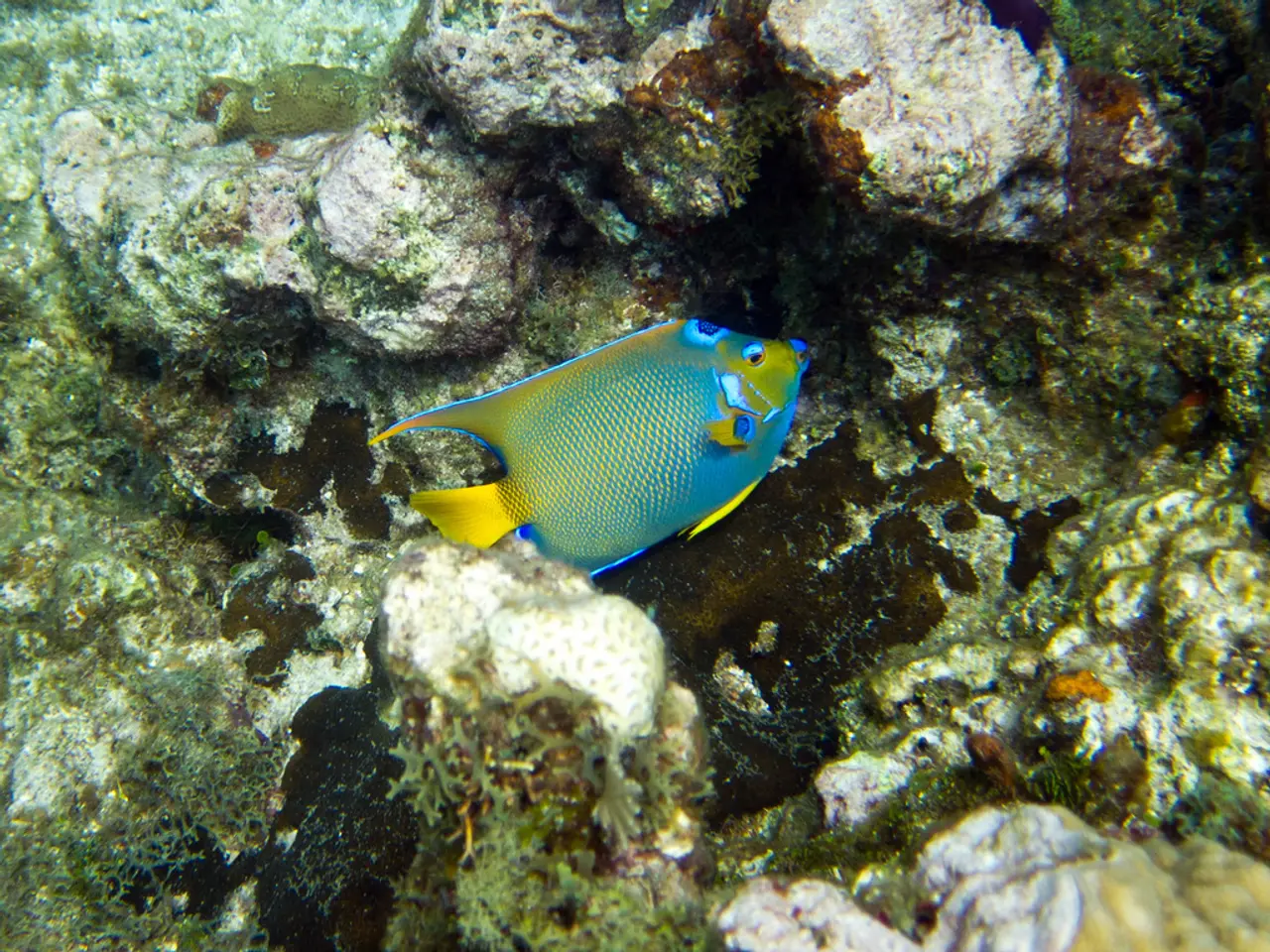Coral Reef Survey in the Mariana Archipelago Breaks Previous Records in 2025
Expedition Breaks Records in Pacific Coral Reef Surveys
In a groundbreaking mission, scientists embarked on an extensive exploration of coral reefs in the Pacific, covering various islands and atolls. The expedition, which was part of the National Coral Reef Monitoring Program, was funded by the Coral Reef Conservation Program.
The team's itinerary included surveys around Wake Atoll, Guam, the Commonwealth of the Northern Mariana Islands, and several other islands in the Mariana archipelago, such as Uracas, Maug, Agrihan, Pagan, Alamagan, Guguan, Sarigan, Saipan, Tinian, Aguijan, Rota, and Guam. They also planned to survey American Sāmoa, Howland, Baker, Jarvis Islands, Palmyra Atoll, and Kingman Reef in 2026.
During the surveys, high-resolution cameras captured thousands of reef images for analysis, setting a record with 330 sites imaged during this mission. Unfortunately, few humphead wrasse, bumphead parrotfish, and scalloped hammerhead shark were seen during the surveys.
To gather more comprehensive data, the team employed various methods. Divers conducted traditional surveys, while another team collected plankton samples in search of fish larvae during the divers' sleeping hours. Towboard surveys were performed at Wake Atoll to spot more mobile and rare fish species.
The team also collected ocean condition and chemistry data at established sites, including Maug Caldera where underwater volcanic vents release carbon dioxide. This year, the fish survey team completed 422 fish surveys, the highest number ever conducted in a single year for this region, breaking previous records.
The long-term reef surveys help safeguard coral ecosystems for future generations, contributing a $3.4 billion dollar value to the U.S. economy through tourism, fishing, and recreation. However, ocean acidification has significantly reduced coral cover and diversity near Maug Caldera over the past 22 years of routine surveys.
The expedition was conducted under various permits, including USFWS Special Use Permit (Ritidian Point) #12518-25006NPS, Scientific Research and Collecting Permit #WAPA-2025-SCI-0003CNMI, DLNR DFW Scientific Research License # SRC25-10-REGuam, and DAWR Research Permit #SCR-MPA-25-008.
The data collected from this mission will be reviewed for accuracy and used to generate reports to assist in the management of Pacific reefs. Once the review is finished, the data will be made publicly available.
Accessing the dataset:
- Data.gov: As a platform that aggregates U.S. federal government datasets, Data.gov provides access to NOAA datasets, including those on coral reefs and oceanographic conditions. Users can search for "Mariana Archipelago coral reef data" or "Wake Atoll ocean conditions" to find relevant datasets collected under NOAA studies.
- NOAA’s Data Visualization Tool: NOAA provides interactive data visualization tools to explore ocean and reef survey data dynamically. Through these tools, users can view spatial and temporal trends in coral reef health, fish abundance, water quality, and other oceanographic parameters documented in NOAA surveys. These tools help convert complex datasets into accessible graphs, charts, and maps for analysis and decision-making.
- The scientific data collected during the Pacific coral reef surveys, including details about the health-and-wellness of marine life, climate-change impacts, and oceanographic conditions, can be accessed via NOAA's Data Visualization Tool for dynamic exploration and analysis.
- As part of their mission, the expedition scientists not only focused on coral reef surveys but also delved into environmental-science aspects such as the study of various fish species and their larvae, ocean chemistry, and volcanic vents' effects on coral reef structures, which are crucial for maintaining the overall fitness-and-exercise balance in these ecosystems and their broader connection with the environment.




